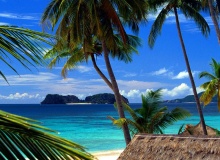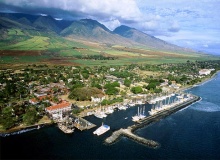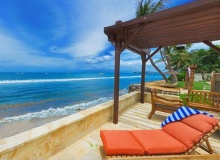Hawaii
A group of Islands in the Pacific with enough beauty to enough holidays in a lifetime.
There's enough beauty and activity in Hawaii to fill more holidays than you could take in a lifetime. With so much to choose from, visitors need to be selective. Our recommendation is to decide first on the Hawaii you want to see. It might be beaches, a luau, nightlife rare orchids, hiking in the rain forest, quiet countryside, small towns or scenic drives.
Hawaii, quite literally, is growing. Active lava flows from Kilauea Volcano are forming new land daily. There's even a new island forming a few thousand metres below the surface of the ocean, off the southeastern coast of the Big Island that will someday become the newest Hawaiian island. In fact, it already has a name: Loihi.
There are eight primary islands, each one unique.
Hawaii Island: commonly known as the Big Island. It's larger than all the other islands combined.
Kahoolawe: this former U.S. Navy bombing target is strictly limited. Much of the island remains unusable because of unexploded ordnance.
Kauai: the northernmost of the inhabited Hawaiian islands. Nature is its biggest draw.
Lanai: the smallest of the main islands, quiet and uncrowded.
Maui: the second most-visited Hawaiian island, after Oahu.
Molokai: a rural island best suited for travellers who want to see the old Hawaii and unwind quietly.
Niihau:a tiny, privately owned island, home to about 200 native Hawaiians who live a traditional lifestyle. It is off-limits to visitors.
Oahu: the political, social, economic and population hub of Hawaii. It attracts the most visitors of all the Hawaiian islands.
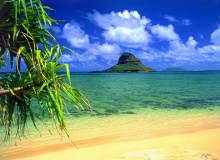
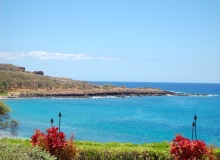
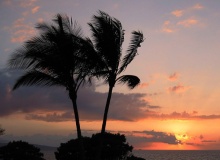
Honolulu
Some say that, because it's Hawaii's largest city, it is less "Hawaiian" than the rest of the state. The high-rise office buildings and traffic of Honolulu don't match people's romantic ideal of what Hawaii should be—remote, palm-fringed beaches and lavish resorts.
In truth, Honolulu is probably the most Hawaiian part of the state, because it best reflects the different aspects of Hawaii. Attractions include a multicultural mix of people, a landscape of tropical greenery and ocean, and a place where amazing events have unfolded—many of them recounted in Honolulu's historic museums. All that's exciting about city life is set against Honolulu's backdrop of dramatic mountains, lush forests and sweeping vistas.
Waikiki remains Hawaii's busiest tourist spot with its popular beach and busy shopping centres. Active travellers can walk across pastureland and see ancient religious shrines, swim with sea turtles off Waikiki Beach and surf past Diamond Head.
WHEN TO TRAVEL to Honolulu
Because Hawaii lies at the edge of the tropical zone, it technically has only two seasons, both of them warm. The dry season is in summer and the rainy season is in winter from November to March. The year-round temperature range is usually 21°-29°C, but this does depend on where you are.
The best months to visit Hawaii are April, May, September, and October, when the nearly perfect weather is even better -- and this is the off season: the kids are in school, and the tourists have thinned out. Hotels, restaurants, and attractions aren't as crowded, and everyone is more relaxed.
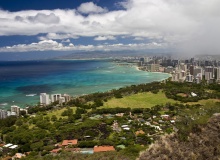
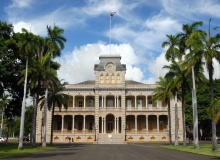
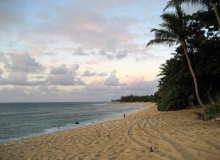
Kona
The famed Kona coast covers about two-thirds of the western coastline of the large Hawaii Island and it is the perfect spot for spectacular sunsets. At the heart of Kona is the town of Kailua-Kona, where many of the area's restaurants and tourist activities are clustered. Along the North Kona and Kohala coast, you'll find some of Hawaii's most luxurious resorts.
Spend several days exploring Kailua-Kona's historical and cultural attractions, engaging in watersports, deep-sea fishing and diving, or just relaxing on the many spectacular beaches. Perhaps the Kona coast's biggest attraction is its fine, sunny weather.
WHEN TO TRAVEL to Kona
The Big Island has constant temperatures of around 21-29ºC. Rainfall is heaviest from December to March, and is intense in some parts of the island. Fortunately, however, the falls are mostly at night.
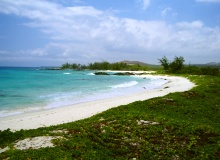
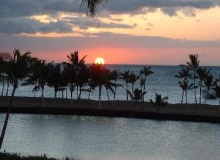
Maui
The island of Maui, Hawaii, deserves its reputation as a top holiday destination. It is covered with pristine white-sand beaches, fringed by calm ocean bays and thrilling surf and famed for its stunning mountain and volcano vistas, sugarcane fields, highland ranches, waterfall-fed pools and twisting mountain roads.
Maui is no hidden gem. It is the second most-visited Hawaiian island, and you'll have to do some work to find tropical solitude. Still, Maui's beauty and the mix of different areas make it a good choice. Regardless of where you're staying, the entire island can be seen in a series of day trips.
Most Maui hotels and resorts line the leeward, dry western shores of the island in the west and in the south. The majority of the island's visitors stay there. Beyond the perimeters of the beautiful resort areas, however, the rest of Maui is also interesting to explore.
WHEN TO TRAVEL to Maui
In general, there are two seasons in Maui, summer and winter. The summer months, April to October, tend to be drier and warmer when the daily average highs are 25-29C. The winter months, November to March, tend to get more rainfall and are a bit cooler with daily average highs in the lower 20’s.
